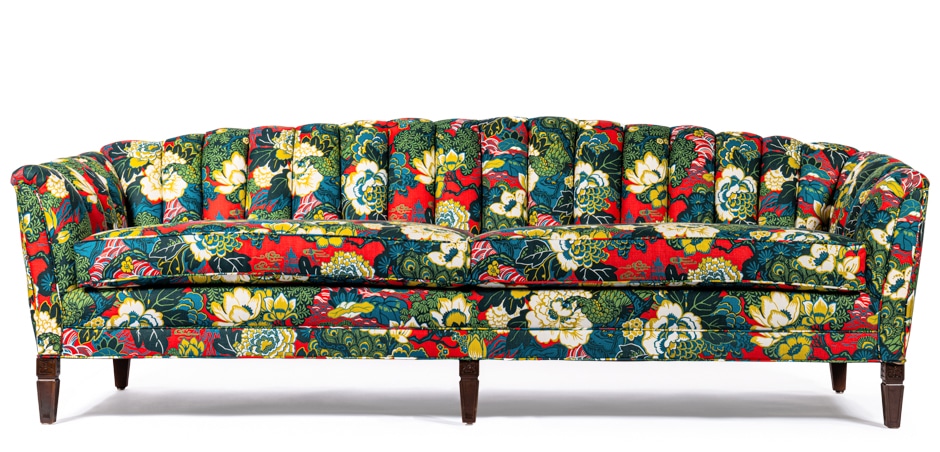Hit Refresh: Upcycled Couch
Why send that old couch to the landfill? Reupholster it! Minneapolis-based furniture designer and upholsterer Nicole Crowder explains how it works.

Source a Sofa
If you’re shopping for a new-old sofa at a local thrift store, make sure you get one with good bones. “Notice how stable the seat is when you sit down,” Crowder says. “Sagging or squeaking means there’s wear and tear and you’ll need to pay extra to tighten the springs to maintain its integrity.”
Second, look for stains, burns, or holes that indicate it may have been chewed by vermin. Last, make sure the sofa feels sturdy overall—anything too fragile will most likely need a lot of work.
Find Your Fabric
Before you commit to a new fabric, there are a few things to consider: Is this going to be a high-traffic sofa? Do you have pets and kids? Go with polyester, a linen or cotton blend, twill, or chenille.
“All of these generally have higher rub counts and heavier weights for durability,” says Crowder. “Rub counts are determined by testing fabrics to see how many times they can be run through a machine before the threads get worn. So if the threads start to wear out after 25,000 times through, the rub count will be 25,000.” She suggests looking for rub counts between 50,000 and 100,000 for furniture in your home.

Estimate Yardage
Your upholsterer can help you figure out exactly how much fabric you’ll need, but Crowder can get you started. As a rule of thumb, she recommends measuring each part of your sofa, taking into account the amount of pull certain fabrics have. Heavier fabrics won’t stretch around curves and corners as easily and will require a bit more yardage. Tufting, quilting, piping, and covered buttons also add to the amount of fabric you’ll need to buy, as well as the cost for the extra labor.
Sit Pretty
If you’re still in love with your current sofa—whether for sentimental reasons, you’ve broken in the cushions exactly the way you want, or it just fits your home perfectly—but the fabric has been beaten up by spill-prone little hands, muddy paws, or years of use, Crowder suggests asking an upholsterer for a quote before buying a new sofa.
“Weigh how much you paid for the couch initially and then see if you’re willing to invest. I’ll have clients who bought a new sofa for $300 from a showroom floor, then spent $2,000 on reupholstering because they found the dream fabric design that suits their home,” she explains.
“Conversely, if you bought a $2,500 sofa and its fabric is destroyed, it may be better to get a less expensive sofa, at least until the kids and pets outgrow destroying it.” There are no 100-percent child- or pet-proof fabrics, she says, and in the end it’s about being realistic about your lifestyle and the amount of money you’re ready to spend.

Look familiar? We had this couch reupholstered for our cover last summer. We loved it so much we wanted to include it in our Color issue. That bright, bold print makes us feel off-the-charts happy!
By Hannah Baker | Sofa photograph by Dennys Ilic | Drew + Jonathan photograph by Meredith Jenks





